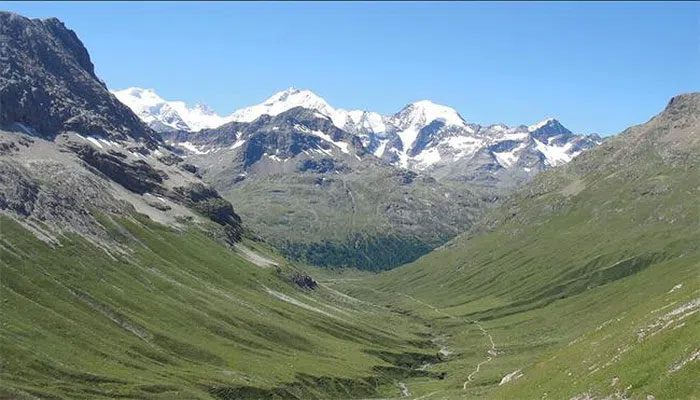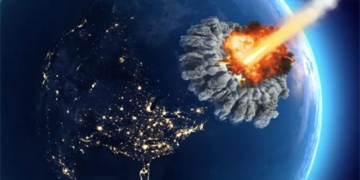The famous snow-capped Alps are melting and gradually being replaced by vegetation.
This seemingly healthy “greening” process is actually a stark warning about the rapidly accelerating climate change. This research was published in the journal Science on June 2, based on images of the iconic mountain range in Europe captured by satellites over 38 years.

The “greening” process of the Alps is a stark warning about the accelerating climate change. (Photo: AFP)
The study’s author, Dr. Sabine Rumpf, an ecologist at the University of Basel, noted that scientists were surprised to see this greening phenomenon occurring robustly. Greening is a common phenomenon in the Arctic, but it has never before occurred on such a large scale in mountainous areas. However, since both poles of the Earth and high mountain ranges are warming faster than the rest of the planet, scientists believe that this situation is having a similar impact in high-altitude regions.
In the study, the group of scientists focused on areas at an elevation of 1,700 meters above sea level, excluding cultivated areas, forests, and glaciers. Analysis results based on data recorded from 1984 to 2021 showed that during the summer, about 10% of the studied area was no longer covered by snow. The scientists also compared the area covered by vegetation using wavelength analysis methods to detect the amount of chlorophyll present, with the result that vegetation was found to be thriving over 77% of the studied area.
Greening occurs in three different ways, including the emergence of plants in areas where they had never appeared before, plants growing taller and denser due to favorable conditions, and specific types of plants growing normally at lower elevations and gradually moving to higher areas.
According to Dr. Rumpf, climate change is the driving force behind this transformation, as warming conditions facilitate faster plant growth. Another side effect is that as temperatures rise, precipitation falls as rain instead of snow. However, this leads to negative consequences, as much of the drinking water comes from melting snow; if water is not stored as snow, it will disappear more quickly as it flows into rivers. Additionally, this phenomenon also affects the lives of species that have adapted to the Alpine region, while negatively impacting the tourism sector, which is a key economic area here.
However, researchers also suggest that the greening of mountain peaks could enhance CO2 absorption capacity, but if this condition continues, it could lead to excessive melting and result in overheating. Snow reflects about 90% of solar radiation, but vegetation absorbs more and radiates energy back as heat—thereby accelerating the warming process.
Based on the current observed conditions, Dr. Rumpf predicts that snow cover will continue to decrease, especially in lower elevation areas. Another phenomenon known as “browning”—referring to areas not covered by snow or vegetation—has also been detected in nearly 1% of the study area. This phenomenon occurs more frequently in observed areas in the Arctic or the mountainous regions of Central Asia. This situation stems from increased instances of extreme rainfall and drought, coupled with a decrease in water from melting snow, which is vital for plant growth.


















































